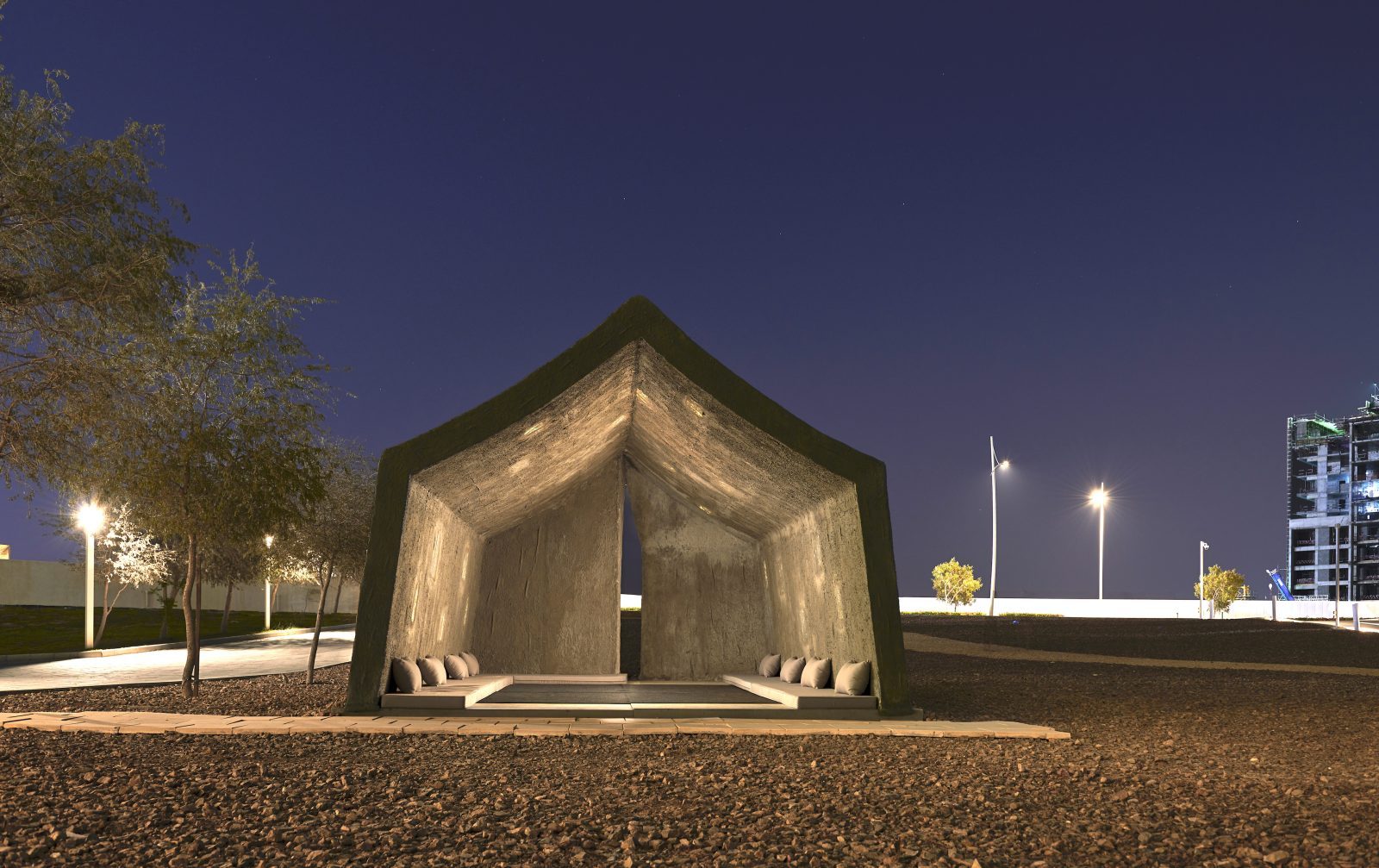Tents: An Architectural Language
Tents: An Architectural Language

It’s a ubiquitous architectural form. An architectural typology that spans centuries and borders, a staple across cultures. The tent. In its simplest form – it’s a shelter, with material draped over a frame of poles. It’s an architectural language that is intrinsically linked to nomadic living. Yurts, for instance, functions as an easily portable dwelling for the Kazakh and Kyrgyz peoples. At the same time, tents have proved a popular stylistic precedent for architects, the lightweight structures of German architect Frei Paul Otto being a case in point. The tent is a complicated architectural language – one that straddles the line between temporary and permanent, and one that also functions as a symbol of wealth and a symbol of scarcity.
The way in which tents act as a luxury symbol is quite interesting. Today, a quick Google search yields an array of “Glamping” options across Europe. These high-end holiday lets are stylish, furnished with luxury amenities, hence the name – a portmanteau of “glamorous” and “camping”. Across the UK, yurts and similar types of tents function as an architectural backdrop for a more “grounded” holiday experience, where a happy balance between harmony with nature and access to state-of-the-art facilities can be achieved.

The luxury camping concept is, however, far from a new one. Its origins lie as far back as the 16th century when the Scottish Earl of Atholl organized the installment of lavish tents filled with provisions in preparation for the visiting King James V and his mother. 400 or so years later, the “African Safari” was born, wealthy Americans and the British aristocracy flocking to colonial Africa for adventurous excursions – but excursions that did not sacrifice luxury.
Related Article
Refugee Camps: From Temporary Settlements to Permanent Dwellings
The architectural configuration of these tents was quite simple – typically consisting of canvas roofs supported by poles. They were, however, opulently furnished, with the colonial traveler supported by an array of African porters and guides in what was an inherently exploitative relationship – the traveler left to his own discretion to determine “adequate payment.”

This era has had such lasting power that even contemporary safari camps in countries such as Kenya seek to architecturally evoke this period, making for a situation where luxury tents and camps are implicitly associated with riches born out of colonial exploitation.
In contrast, the tent has also functioned as a symbol of scarcity and deprivation – amplified by media coverage. Nowhere is this more apparent than in the case of refugee camps. For Syrian refugees in the Bekaa Valley of Lebanon, makeshift tents manufactured out of wooden frames covered by billboard advertisements offer little protection from the elements. In Jordan and Greece, the UNHCR logo emblazons the tents of the Zaatari refugee camp and the Kara Tepe emergency site. The tent here is far from a faux-nomadic typology as with luxury tented camps, but instead a hostile site of impermanence.

With a vast majority of refugee camps being placed in faraway, poorly connected areas, tents in this scenario act as a visual marker of asylum-seeker status, where the tents function as an architectural distinction from the “urban” area of a settlement, leading to further ostracization of immigrants living in these refugee tents. With the average length of stay in a UNHCR camp being 17 years, the nature of a refugee camp tent as a hostile site of impermanence is in reality a permanent home for many.
In the Palestinian refugee camp of Dheisheh, south of Bethlehem, stands the Concrete Tent. Built by the artistic practice DAAR, it is a gathering, social, and educational space in the form of a tent constructed entirely out of mesh and concrete. It’s an apt representation of the tent as a complicated architectural language. Here, the architectural legacy of people who were made to live in refugee tents is given a powerful symbolic marker, moving the refugee tent away from a singular narrative of poverty and marginalization.

From being the vernacular architecture of certain cultures to being a form of luxury accommodation, to being a form of emergency shelter, the tent as an architectural intervention is multifaceted. It can be lauded as a typology providing a so-called authentic – albeit luxurious – temporary experience despite being permanent structures; as in the case of colonial-style safari camps. Or they are stigmatized as temporary structures as in refugee camps, acting as a difficult reminder of the violence of borders.







